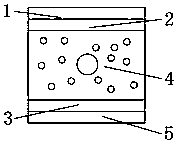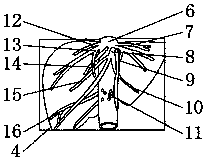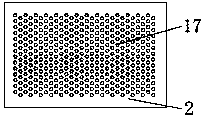Organ chip
An organ chip and chip technology, applied in the field of microfluidics, can solve problems such as inability to quantify, take a long time, and cannot accurately study cell interactions, and achieve the effect of improving accuracy and efficiency
- Summary
- Abstract
- Description
- Claims
- Application Information
AI Technical Summary
Problems solved by technology
Method used
Image
Examples
Embodiment Construction
[0019] The following will clearly and completely describe the technical solutions in the embodiments of the present invention with reference to the accompanying drawings in the embodiments of the present invention. Obviously, the described embodiments are only some, not all, embodiments of the present invention. Based on the embodiments of the present invention, all other embodiments obtained by persons of ordinary skill in the art without making creative efforts belong to the protection scope of the present invention.
[0020] see Figure 1-3 , the present invention provides a technical solution: comprising No. 1 outer layer chip 1, No. 1 porous layer 2 is arranged on the lower end outer surface of No. 1 outer layer chip 1, and No. 1 porous layer 2 is provided with a middle chip 4 on the lower end outer surface of No. 1 porous layer. The outer surface of the lower end of the middle layer chip 4 is provided with a No. 2 porous layer 3 on the outer surface of the lower end of t...
PUM
 Login to View More
Login to View More Abstract
Description
Claims
Application Information
 Login to View More
Login to View More - R&D
- Intellectual Property
- Life Sciences
- Materials
- Tech Scout
- Unparalleled Data Quality
- Higher Quality Content
- 60% Fewer Hallucinations
Browse by: Latest US Patents, China's latest patents, Technical Efficacy Thesaurus, Application Domain, Technology Topic, Popular Technical Reports.
© 2025 PatSnap. All rights reserved.Legal|Privacy policy|Modern Slavery Act Transparency Statement|Sitemap|About US| Contact US: help@patsnap.com



